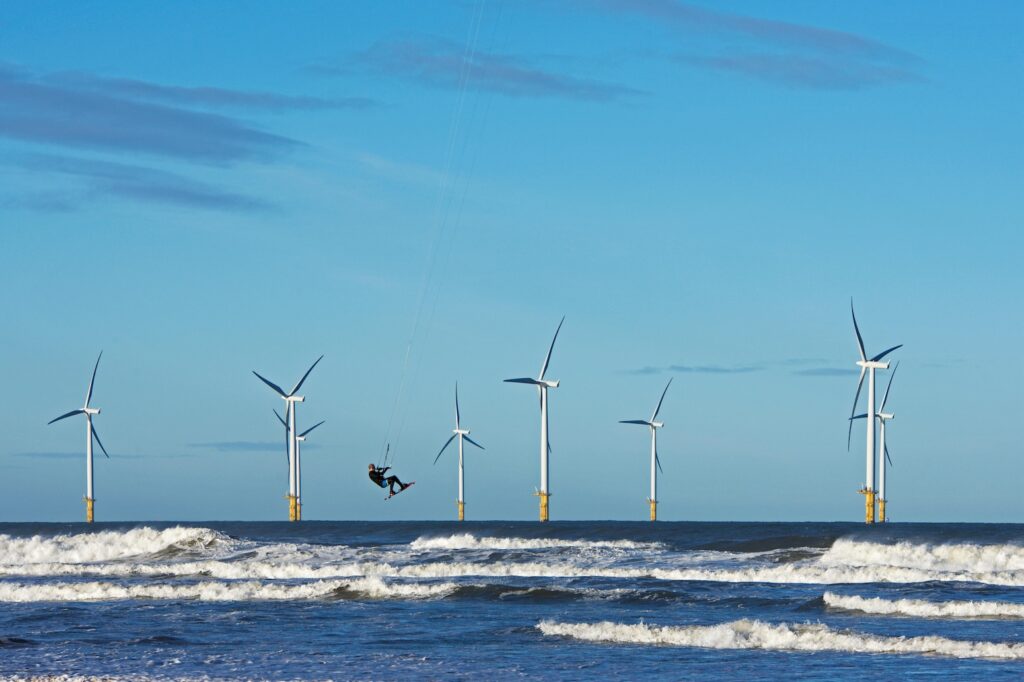Analysis: UK’s record-breaking renewable auction ‘will cut consumer bills’
The UK’s latest auction for new renewable energy capacity has secured a record-breaking amount of funding, with more than 130 wind, solar, and tidal energy projects awarded contracts.
According to the UK government’s Department for Energy, Security, and Nuclear Safeguards (DESNZ), the auction has secured 9.6 gigawatts (GW) of renewable capacity, surpassing last year’s figure of 3.7GW.
The successful projects include 3.4GW of new-build offshore wind capacity, 1.6GW of previously submitted offshore wind capacity, and floating offshore wind projects.
Return of offshore wind
Last year’s auction failed to contract any new offshore wind projects, a significant setback for the UK’s clean energy ambitions.
However, the changes introduced ahead of this year’s auction, including increasing the price cap for offshore wind by 66%, have seen a resurgence of interest in the technology.
The Hornsea Project 4 and East Anglia 2 offshore wind farms were two of the successful projects, securing a strike price of £58.87/MWh and £54.23/MWh, respectively.
‘Big step-up’ needed
While the recent auction result is a welcome development, experts warn that a “big step-up” is needed to build enough renewable capacity to meet the government’s target of a net-zero power system by 2030.
Trade body Energy UK estimates that the upcoming two auctions – this year and next year – “must deliver” 26GW of new capacity to meet the target.
However, reaching this level would require an unprecedented fourfold increase in offshore wind capacity secured in a single auction.
Experts have cautioned that the practical issues, such as supply chain constraints and availability of skilled workers, make it challenging to deliver such a large increase in capacity in a single auction.
Analysis
According to analysis from Aurora, deploying more renewable energy capacity ultimately lowers costs to consumers by increasing the availability of cheap, low-carbon power.
In an emailed statement, Dr. Raghu Menon, energy analyst at Aurora, said: “The cost of the CfD contracts awarded will depend on how prices look in the years these assets are operational and subsidised, i.e. between 2026 and 2045. Overall, given that wholesale prices are expected to drop as more intermittent renewables connect to the grid, we do expect the total cost of AR6 contracts to be higher than present market prices imply. However, deploying this capacity ultimately lowers costs to consumers by increasing the availability of cheap, low-carbon power and is key to reducing power sector emissions.”
What does this mean for consumers?
Despite the negative reporting from some newspapers, expert analysis suggests that the CfD auction will not increase consumer bills.
In an interview, Adam Bell, director of policy at consultancy Stonehaven, said: “The only meaningful comparison is between a system that has those additional [wind and solar] projects and a system that does not. So you add the cost of CfD payments and subtract lower wholesale prices that arise from having more zero marginal cost generation.”
The analysis directly contradicts the misleading coverage from the Daily Telegraph and Daily Mail, which reported that the auction would increase bills.
Conclusion
The UK’s record-breaking renewable auction has secured a significant amount of funding for new renewable energy projects, exceeding expectations.
However, experts warn that more progress is needed to meet the government’s target of a net-zero power system by 2030.
For consumers, the auction’s impact is expected to be positive, with lower bills resulting from the increased availability of cheap, low-carbon power.
FAQs
Q: What does the CfD auction entail?
A: The CfD (Contracts for Difference) auction is an annual process by which the UK government auctions off contracts to renewable energy developers, offering fixed prices for their electricity output.
Q: How much funding did the latest auction secure?
A: The latest auction secured a record-breaking 9.6GW of renewable energy capacity, surpassing last year’s figure of 3.7GW.
Q: What are the challenges in building enough renewable capacity to meet the government’s target?
A: Experts warn of practical issues, such as supply chain constraints and availability of skilled workers, which make it challenging to deliver a large increase in capacity in a single auction.
Q: What does the CfD auction mean for consumers?
A: According to expert analysis, the CfD auction will not increase consumer bills, as the increased availability of cheap, low-carbon power will lower costs to consumers.
Q: Are there concerns about the pace of renewable energy deployment in the UK?
A: Yes, experts warn that more progress is needed to meet the government’s target of a net-zero power system by 2030, particularly in the area of offshore wind deployment.
Q: Can the UK meet its net-zero target?
A: Experts agree that more effort is required to build enough renewable energy capacity to meet the government’s target, but note that progress has been made and there is still time to adapt and overcome challenges.


.png?w=150&resize=150,150&ssl=1)
.png?w=150&resize=150,150&ssl=1)



.png?w=150&resize=150,150&ssl=1)